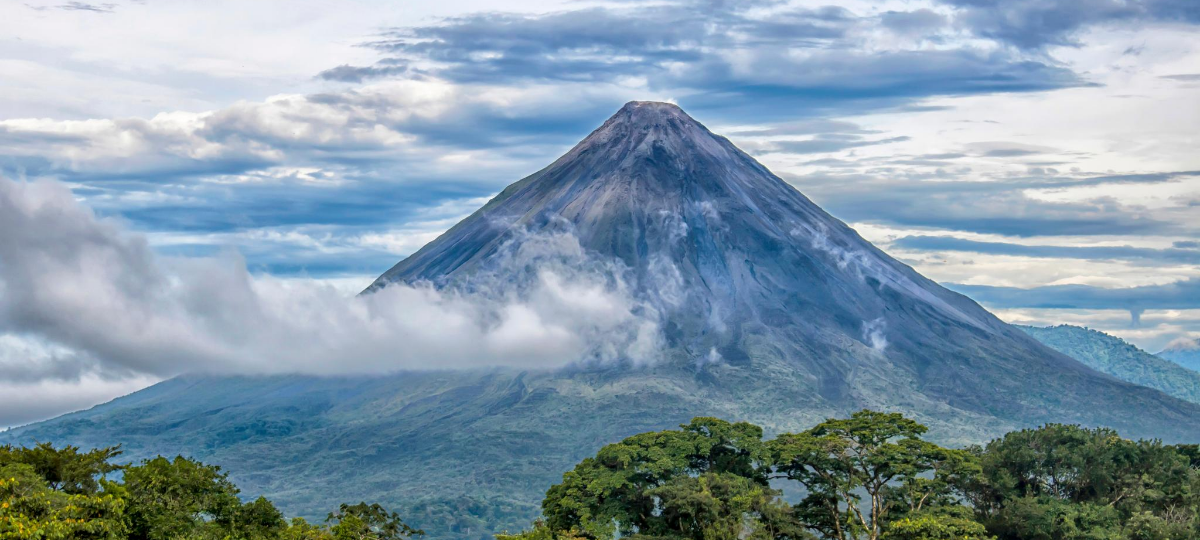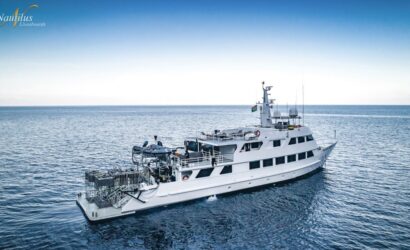Costa Rica

TWO COASTS FOR DOUBLE DIVING ADVENTURES
Schools of hammerheads and manta rays on the Pacific coast and vibrant reefs on the Caribbean coast. No matter what diving adventure you are looking for, Costa Rica has it all.
Costa Rica is a small country in Central America, bordered by Nicaragua to the north, the Caribbean Sea to the northeast, Panama to the southeast, the Pacific Ocean to the southwest, and Ecuador to the south of Cocos Island. The name Costa Rica means “rich coast” which is totally true in terms of marine biodiversity. Costa Rica has not one but two rich coasts – the Pacific coast and the Caribbean coast.
The Pacific coast is more for big pelagics like manta rays and schooling hammerheads in Cocos Island, an offshore area of Costa Rica. Even humpback whales can be seen seasonally. It has some stronger currents, making it more suitable for advanced divers.
The Caribbean coast is more relaxed and suitable for beginners. The region is not fully mapped yet, so adventure lovers can still explore some new dive spots.
THE BEST TIME TO VISIT COSTA RICA
Costa Rica has two seasons. The rainy season from May to November and the dry season from December to April. Each season has its specialty.
During the rainy season it is less-crowded but the best time if you want to see the big stuff. Nutrient swells attract hammerheads in Cocos Island or bull sharks in Bat Island. Visitors can expect rain for around two hours per day. The best time to dive the Caribbean coast is from August to December as the sea is calmer at this time.
The dry season is more suitable for beginners as the sea is calmer and the diving is easier. The sun is shining so visitors can combine relaxing sunbathing with diving in colorful reefs around Guanacaste and Quepos.
BEST DIVE SPOTS IN COSTA RICA
By far the most popular and most spectacular dive spot is Cocos Island. It is an island 550km southwest of the coast of Costa Rica. It takes more than 30 hours to get to Cocos Island. That means the only feasible way to get here is by liveaboard. The entirety of Cocos Island has been designated a Costa Rican National Park since 1978 and has no permanent inhabitants other than Costa Rican park rangers. This remoteness and high level of protection allow the ecosystem to thrive. The reefs are healthy and full of the common fishy inhabitants including big pelagics like mantas and eagle rays crossing the blue. But the main attraction is by far the huge schools of sharks, especially hammerheads, swimming around Cocos Island. Fortunately, the visibility is usually very good to enjoy all the sharks.
Another adventurous diving attraction are the bull sharks at Bat Island. This is a truly adrenaline-filled adventure for advanced divers as the dive spot is around 30 meters deep.
Wreck-Lovers will find many interesting sunken ships along Tortuga Island on the Pacific Coast, including the Franklin Chang, Colonel Alfonso Monge, and the Caroline Star. All wrecks lay within recreational diving limits.
More interesting dive spots are Cano Island where the marine mammals like humpback whales, dolphins and orcas can be seen. On the Caribbean coast, you can find some good reefs in the Cahuita National Park.
LIVEABOARDS IN COSTA RICA
Liveaboards in Costa Rica offer great trips to Cocos Island as it is the only way to explore the thrilling underwater life of this area. Trips usually take around 10 days to have enough time to spend underwater. The boats are made for high sea conditions as the ocean can be rough from time to time. However, the boats are not missing any amenities to provide high comfort. All you have to do is enjoy it. Cocos Island is one of the best dive spots in the world.
Cocos Island
ISLAND OF THE SHARKS
Scuba diving amongst hammerhead sharks 550km of the coast of Costa Rica. This is only one highlight of your liveaboard trip to Cocos Island.
Cocos Island is an island 550km southwest of the coast of Costa Rica. It takes more than 30 hours to get to Cocos Island. That means the only feasible way to get here is by liveaboard to have enough time for exploring the dive sites. Every minute cruising through the waters is worth it when you see the vibrant marine life underwater. The entirety of Cocos Island has been designated a Costa Rican National Park since 1978 and has no permanent inhabitants other than Costa Rican park rangers. This remoteness and high level of protection allow the ecosystem to thrive. The reefs are healthy and full of the common fishy inhabitants including big pelagics like mantas and eagle rays crossing the blue. But the main attraction is by far the huge schools of sharks, especially hammerheads, swimming around Cocos Island. Fortunately, the visibility is usually very good to enjoy all the sharks.
BEST TIME TO VISIT COCOS ISLAND
From June to November it is the rainy season and this brings nutrient waters. And this attracts the big pelagics. That´s why the rainy season is a good time to go, if you want to see a lot of stuff underwater, including manta rays, hammerhead sharks and whale sharks.
BEST DIVE SITES OF COCOS ISLAND
Bajo Alcyone is a 182 m long submerged mountain and the place to see the huge schools of hammerheads and other pelagics like manta rays and huge schools of fish.
Other dive sites to have amazing dives with hammerhead sharks are Everest, Dirty Rock or Manuelita Deep.
Big Dos Amigos is located on the southeast side of Cocos Island. With its 13m high arch and 18m high pinnacle, it attracts schools of Rainbow Runners, Snapper and Jacks. Hammerheads Sharks can also be spotted patrolling and swimming in the arch.
LIVEABOARDS IN COCOS ISLAND
With lots of thrilling dive sites, Cocos Island is where divers can truly experience real interactions with Hammerhead Sharks and its other diverse array of marine life. But indeed a liveaboard trip is the only possible way. Trips usually take around 10 days to have enough time to spend underwater. The boats are made for high sea conditions as the ocean can be rough from time to time. However, the boats are not missing any amenities to provide high comfort. All you have to do is enjoy it.



